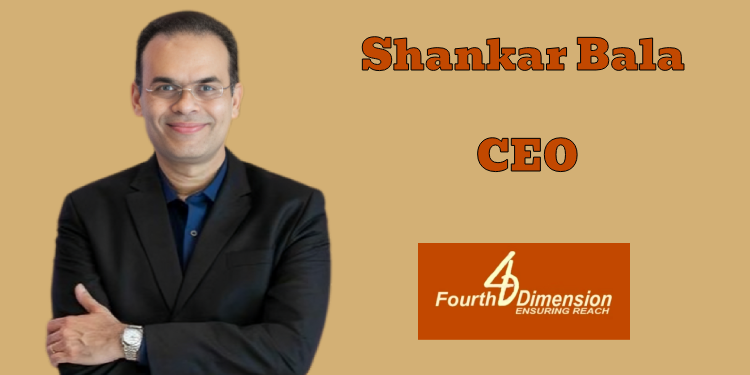A very unsettled thought running in the minds of media pundits, clients, and practitioners all over.
It all started very early when the dominance of print media was so high, and television was a tyro in the real sense. Print had much to boast of, like IRS, NRS, and ABC, while TV was just taking baby steps. Television came to India on September 15, 1959, with experimental transmission from Delhi.
I’m talking about the early 90s. India’s national broadcaster ruled the charts in the 80s with iconic shows like Nukkad, Karamchand, Ramayan, Mahabharat, and Chitrahar, which made millions glue themselves to their sets. The change slowly occurred with the emergence of Zee Network (1992), Sun Network (1993), and ETV Network (1995)—to name a few. This shift changed media consumption; we were close to 97 crore in population in 1995, and as a nation, we were teeming with confidence and enthusiasm. With a cable and satellite (C&S) penetration of under 13 million in 1995, today India boasts of over 900 TV channels across most Indian languages, with the C&S reach touching new highs.
The number of television households in India stood at 226 million in 2022, and is expected to grow to 248 million by 2026. The power of regional channels, especially in the five southern states, needs to be lauded. The fact that Hindi is still not widely understood in these states has fueled the rise of regional advertising and entertainment, making this market particularly dynamic.
Now you might be wondering, what does all this have to do with rates and ratings? Before you get bored, let me explain the science of television ratings.
TAM and INTAM
In 1994, the fragmented and heterogeneous television market led ORG-MARG (Operations Research Group – Multiple Action Research Group) to introduce INTAM (Indian National Television Audience Measurement). By 1997, a joint industry body appointed TAM (backed by Nielsen Corporation) as the official record keeper of audience metrics. Due to differences in methodology and sample sizes, TAM and INTAM often provided differing results for the same programs.
This eventually led to the merger of the two measurement systems into TAM, which, for several years, became the de facto standard and monopoly in audience metrics.
AMAP
In 2004, a rival ratings service funded by American NRI investors called Audience Measurement Analytics Limited (AMAP) was launched. Initially, it faced cautious uptake from clients, but it effectively broke TAM’s monopoly. What set AMAP apart was its quick turnaround: its ratings were available within one day, compared to TAM’s one-week timeline.
In 2010, BARC India launched its services, analyzing the viewership habits of over 210 million TV households (891 million TV viewers). This makes it the world’s largest television audience measurement service.
While these ratings ultimately decide the fate of over 900 TV channels across the country, the biggest issue is the over-dependence on these metrics by clients, who in turn advise media agencies to focus on “efficient media spends.” Unfortunately, this often leads to a flawed approach.
The Problem with Ratings Alone
The issue lies in the fact that ratings, which are based on a sample that gets extrapolated to the entire audience, often fail to capture the quality and context of the audience. We’ve all seen how extrapolation works during elections, but the problem remains in applying the same logic to media planning.
In the late ’90s, clients would often meet us to gain qualitative insights before passing them on to their sales and marketing teams without bias. Effective media planning always stemmed from local market inputs, complemented by quantitative data from the media agency. However, nowadays, media agencies rarely have the opportunity to question the media plans approved by clients, especially when the client has a long-standing relationship with the agency.
I find it quite quirky when clients argue that they cannot meet all the 900-plus channels in the market. Isn’t it the marketing team’s job to engage with media partners and understand the trade’s nuances?
The Price of Cheap Media
We should also understand when a seller from any TV Channels makes an effort to seek an audience with an agency or a client he/she should be considered. Today the media industry is in a flux with monies dwindling in many categories and clients engaging in frequent media pitches – not for want of better rates its cheaper rates and they keep ruminating on excel sheets.
We represent flagship regional news channels in southern India our sales team goes aghast when they ask for bizarre requests to a large extent coming from clients. Many Media Agencies under the influence of their clients tend to be unreasonable with TV Channels for asking rates and unheard innovations (a new term which emerged in the 90’s) which according to many can’t be qualified for that word and is un-justified, my friends in TV continue to accede under pressure because of revenue.
Clients need to be more sensitive and be aware of the market conditions rather than portraying a grim outlook always, most of the news channels in regional space face this undue pressure, since the genre is less than 5-6 %. When a negative news is flashed for a “genuine” purpose you will have the Peon to MD call up and audaciously coerce ( not request ) you to remove, the final threatening comes in the form of business loss if not adhered to, the same client also pass judgement on many news channels taking sides with political parties when there is no business obligation.
A Changing Media Ecosystem
As a country we are fast growing with a very young population, If clients and brands need to take advantage of this, they should spend more time to consider qualitative inputs rather than relying only on ratings. I get even more exasperated when some clients have a very pitiable understanding about the southern states, their attention span beyond Cinema and few regional/ organised brands is noteworthy and the fitting response is it’s impossible to learn the nuances of all 28 states in India.
Quality Over Ratings
Ultimately, the key takeaway is that high ratings don’t necessarily lead to good rates. And while cheap rates might seem attractive, they won’t help clients break into a broadcaster’s media plan. Clients need to build strong, transparent relationships with media agencies and broadcasters to ensure effective media strategies. Otherwise, the ecosystem risks crumbling under the weight of this rate vs. ratings war.
There are many clients in certain sectors who knowingly—or unknowingly—purchase inventory based on who their audience is, simply because it’s cheaper on a Cost Per Rating Point (CPRP) basis. But this approach doesn’t drive sales.
This is where I give credit to my retail or regional advertisers who place little importance on ratings and instead rely on market feedback. These advertisers often see year-over-year growth. There’s much to learn from these regional wizards.
It’s high time clients understand the importance of having a dedicated qualitative team focused on decoding how media works in the southern states. Without that, we will only be fighting an unjustifiable, inept, and ultimately futile rate war.
After all this, the client’s advice is often like a car ad where the salesperson explains the car’s features and the client asks: “What’s the mileage?” Similarly, when broadcasters present a passionate pitch, clients often respond with: “What rate will you give?” Hopefully, this mindset will change in the coming months, with more emphasis placed on quality and greater empowerment for media agencies.
We’ll wait and see.

















